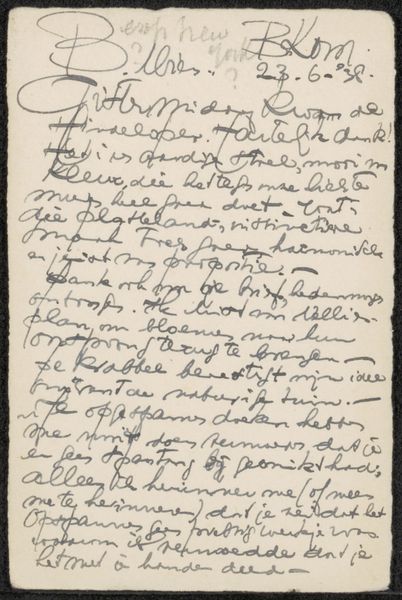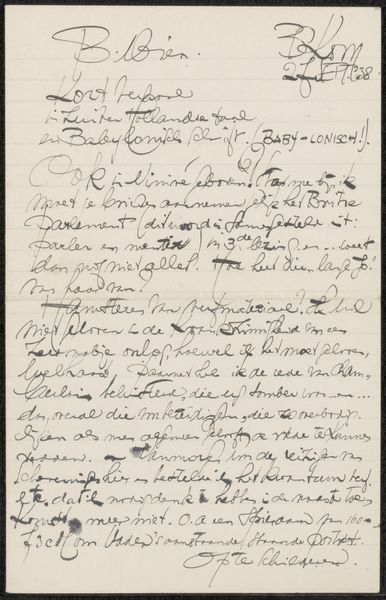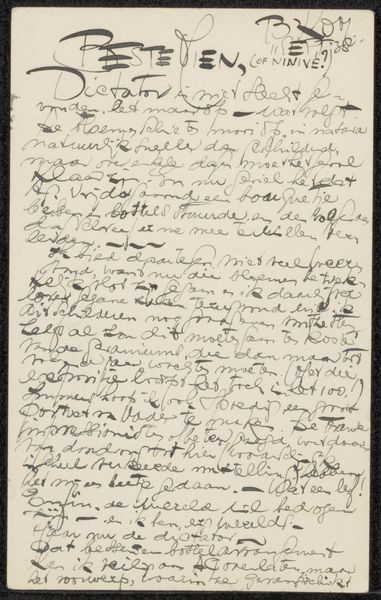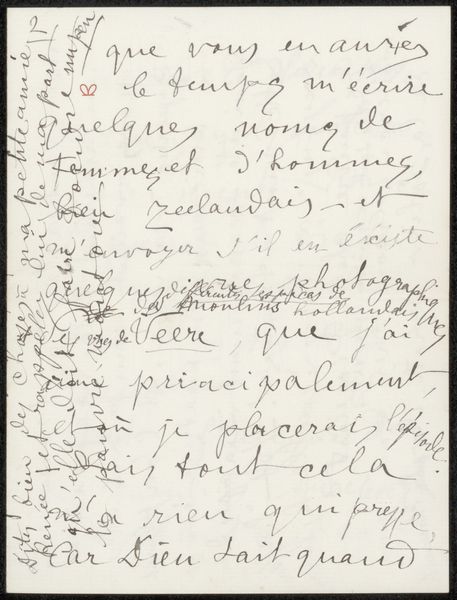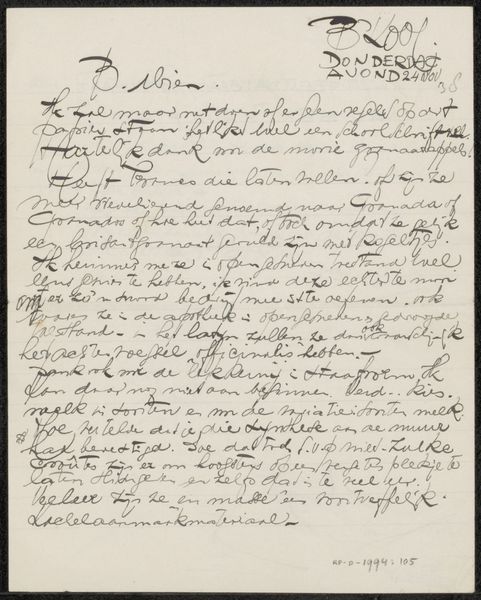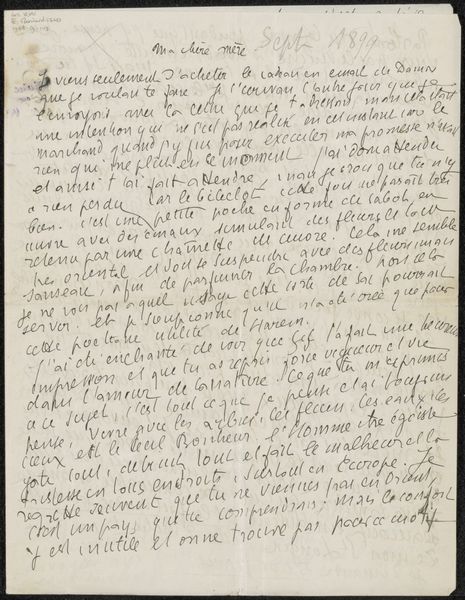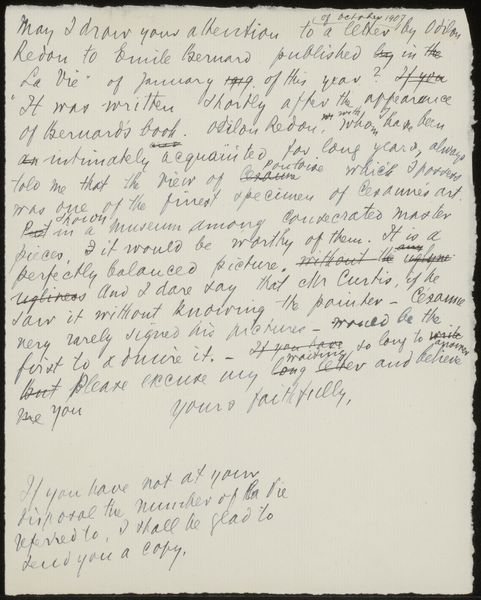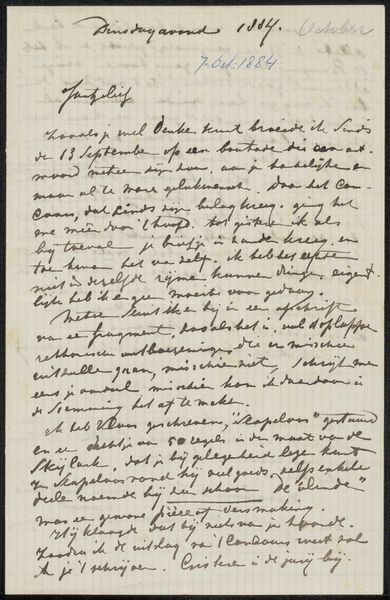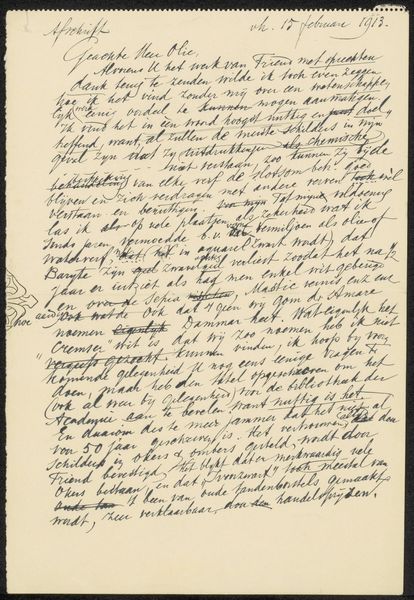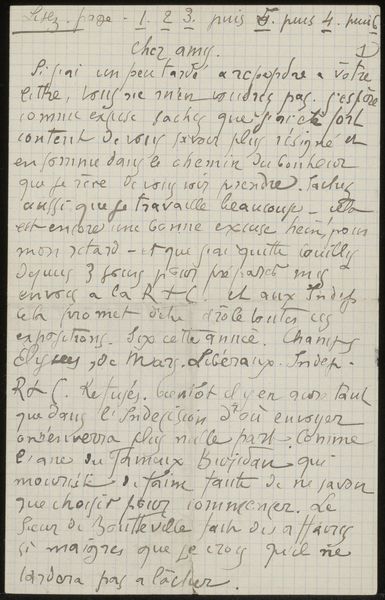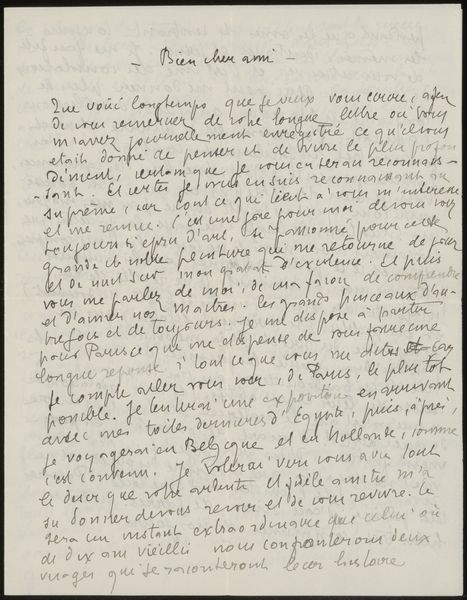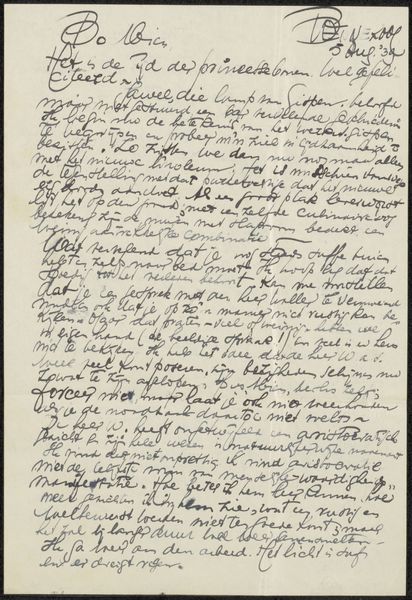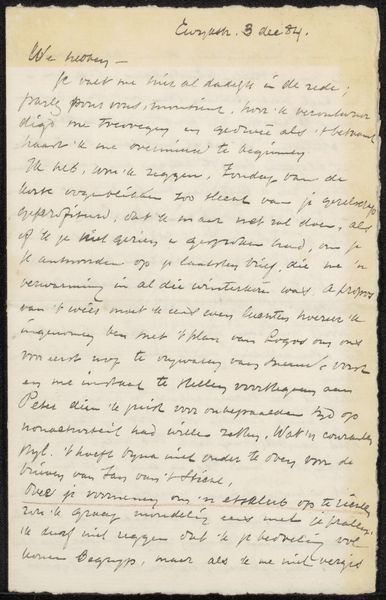
drawing, mixed-media, paper, ink, pen
#
drawing
#
mixed-media
#
pen drawing
#
paper
#
ink
#
pen
Copyright: Rijks Museum: Open Domain
Curator: This is “Brief aan Mien Cambier van Nooten” a mixed-media drawing made with pen and ink on paper, possibly in 1939 by Dutch artist Dick Ket. It resides in the collection of the Rijksmuseum. Editor: It's remarkably dense; almost claustrophobic. The close, tight lines of the script make it difficult to immediately grasp anything specific. It’s all texture. Curator: Considering the materials, it speaks volumes about Ket's artistic constraints. Using everyday, accessible materials like pen, ink, and paper underscores his limited resources as an artist largely confined to his home due to health issues. Editor: Precisely. And that constraint feeds directly into the historical narrative. Ket, working in a time of immense social and political change in Europe, creates this very personal document. We can speculate on who Mien Cambier van Nooten was to him and how socio-political forces influenced his limited material choices and even the subject matter of their correspondence. Curator: The letter, although addressed to someone specific, becomes an artifact revealing broader socio-economic circumstances. It encourages us to reconsider how even the most quotidian communication – a handwritten letter – is imbued with cultural information about labor, literacy, and personal connections within a particular milieu. Editor: Yes, the act of writing itself transforms from simple correspondence to something preserved and presented within an institutional setting. This shifts its significance. The museum's role in preserving and exhibiting such intimate documents influences our engagement with the past, raising important questions about the power of institutions to shape history and assign value. Curator: I agree. I now find myself even more deeply impressed by how Ket transformed meager materials into this compelling statement that reverberates far beyond its immediate personal scope. Editor: Absolutely. The materiality and embedded context of this artwork open up pathways into broader dialogues about societal norms and individual expression, providing new frames through which we appreciate historical realities.
Comments
No comments
Be the first to comment and join the conversation on the ultimate creative platform.
